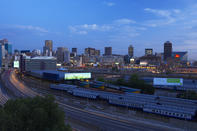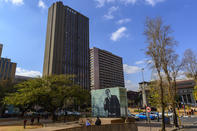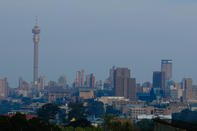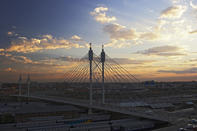Egoli
Egoli is the African name for Johannesburg - the city of gold and hub of South Africa's business world. Barely 100 years ago the first diggers' shacks were placed tentatively on the open grassy plains of the wild African veld.

No-one then could have realised the extent of the wealth that lay beneath them or that their tent-town would become one of the great metropolises of Africa.
Largest Man-Made Forest

Tallest Buildings in South Africa

A Photographer's Subject

The 284-metre Nelson Mandela Bridge spanning the Braamfontein railway yards is the longest cable-stayed bridge in Southern Africa. It is rather apt for it to be named after the man instrumental in bridging South Africa across the apartheid divide. If you want statistics: the north pylon is 42 metres high, the south one 27 metres; 4 000 cubic metres of concrete and 1000 tons of structural steel were used. Don't stick to crossing it in your car: cycle or walk across it at least once.
This is no quick point-and-shoot option, but a subject for photographers to really work. You'll have to move all around Jozi’s newest and most recognisable landmark to make the best of the engineering spectacle and to capture the atmosphere of its unique location.
The trick here is to first work the close-up angles, and then to move out and makeup landscapes If you've got a really wide-angle lens. try to get away from the bridge and use low light to capture the shunting yards and cityscape beyond. Try taking panoramic images and stitching them together. Black-and-white images are also good. Best of all will be when the Highveld afternoon thunderstorm clouds are in attendance.